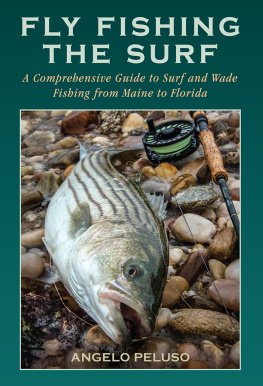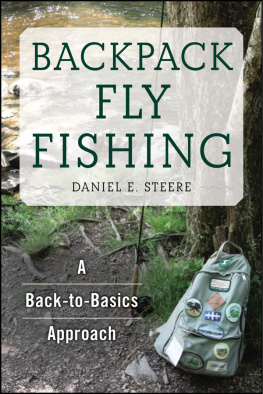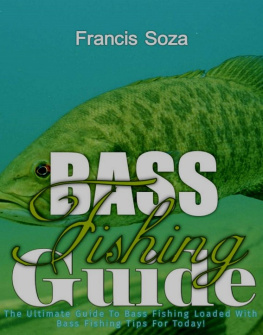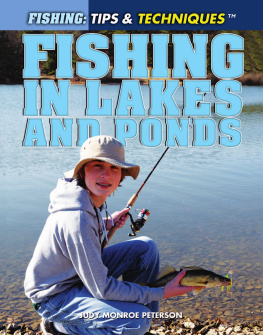FAVORITE FISH
AND FISHING
BY
JAMES A. HENSHALL, M.D.
Author of Book of the Black Bass, Camping and Cruising in
Florida, Ye Gods and Little Fishes, Bass,
Pike, Perch and Others.
And yf the angler take fysshe: surely thenne is there noo man merier than he is in his spyryte.
Dame Juliana Berners.
Copyright 2018 Read Books Ltd.
This book is copyright and may not be
reproduced or copied in any way without
the express permission of the publisher in writing
British Library Cataloguing-in-Publication Data
A catalogue record for this book is available from
the British Library
A Short History of Fishing
Fishing, in its broadest sense is the activity of catching fish. It is an ancient practice dating back at least 40,000 years. Since the sixteenth century fishing vessels have been able to cross oceans in pursuit of fish and since the nineteenth century it has been possible to use larger vessels and in some cases process the fish on board. Techniques for catching fish include varied methods such as hand gathering, spearing, netting, angling and trapping.
Isotopic analysis of the skeletal remains of Tianyuan man, a 40,000 year old modern human from eastern Asia, has shown that he regularly consumed freshwater fish. As well as this, archaeological features such as shell middens, discarded fish-bones and cave paintings show that sea foods were important for early mans survival and were consumed in significant quantities. The first civilisation to practice organised fishing was the Egyptians however, as the River Nile was so full of fish. The Egyptians invented various implements and methods for fishing and these are clearly illustrated in tomb scenes, drawings and papyrus documents. Simple reed boats served for fishing. Woven nets, weir baskets made from willow branches, harpoons and hook and line (the hooks having a length of between eight millimetres and eighteen centimetres) were all being used. By the twelfth dynasty, metal hooks with barbs were also utilised.
Despite the Egyptians strong history of fishing, later Greek cultures rarely depicted the trade, due to its perceived low social status. There is a wine cup however, dating from c.500 BC, that shows a boy crouched on a rock with a fishing-rod in his right hand and a basket in his left. In the water below there is a rounded object of the same material with an opening on the top. This has been identified as a fish-cage used for keeping live fish, or as a fish-trap. One of the other major Grecian sources on fishing is Oppian of Corycus, who wrote a major treatise on sea fishing, the Halieulica or Halieutika, composed between 177 and 180. This is the earliest such work to have survived intact to the modern day. Oppian describes various means of fishing including the use of nets cast from boats, scoop nets held open by a hoop, spears and tridents, and various traps which work while their masters sleep. Oppian's description of fishing with a motionless net is also very interesting:
The fishers set up very light nets of buoyant flax and wheel in a circle round about while they violently strike the surface of the sea with their oars and make a din with sweeping blow of poles. At the flashing of the swift oars and the noise the fish bound in terror and rush into the bosom of the net which stands at rest, thinking it to be a shelter: foolish fishes which, frightened by a noise, enter the gates of doom. Then the fishers on either side hasten with the ropes to draw the net ashore...
The earliest English essay on recreational fishing was published in 1496, shortly after the invention of the printing press! Unusually for the time, its author was a woman; Dame Juliana Berners, the prioress of the Benedictine Sopwell Nunnery (Hertforshire). The essay was titled Treatyse of Fysshynge with an Angle and was published in a larger book, forming part of a treatise on hawking, hunting and heraldry. These were major interests of the nobility, and the publisher, Wynkyn der Worde was concerned that the book should be kept from those who were not gentlemen, since their immoderation in angling might utterly destroye it. The roots of recreational fishing itself go much further back however, and the earliest evidence of the fishing reel comes from a fourth century AD work entitled Lives of Famous Mortals.
Many credit the first recorded use of an artificial fly (fly fishing) to an even earlier source - to the Roman Claudius Aelianus near the end of the second century. He described the practice of Macedonian anglers on the Astraeus River,... they have planned a snare for the fish, and get the better of them by their fisherman's craft.... They fasten red wool round a hook, and fit on to the wool two feathers which grow under a cock's wattles, and which in colour are like wax. Recreational fishing for sport or leisure only really took off during the sixteenth and seventeenth centuries though, and coincides with the publication of Izaak Waltons The Compleat Angler in 1653. This is seen as the definitive work that champions the position of the angler who loves fishing for the sake of fishing itself. More than 300 editions have since been published, demonstrating its unstoppable popularity.
Big-game fishing only started as a sport after the invention of the motorised boat. In 1898, Dr. Charles Frederick Holder, a marine biologist and early conservationist, virtually invented this sport and went on to publish many articles and books on the subject. His works were especially noted for their combination of accurate scientific detail with exciting narratives. Big-game fishing is also a recreational pastime, though requires a largely purpose built boat for the hunting of large fish such as the billfish (swordfish, marlin and sailfish), larger tunas (bluefin, yellowfin and bigeye), and sharks (mako, great white, tiger and hammerhead). Such developments have only really gained prominence in the twentieth century. The motorised boat has also meant that commercial fishing, as well as fish farming has emerged on a massive scale. Large trawling ships are common and one of the strongest markets in the world is the cod trade which fishes roughly 23,000 tons from the Northwest Atlantic, 475,000 tons from the Northeast Atlantic and 260,000 tons from the Pacific.
These truly staggering amounts show just how much fishing has changed; from its early hunter-gatherer beginnings, to a small and specialised trade in Egyptian and Grecian societies, to a gentlemans pastime in fifteenth century England right up to the present day. We hope that the reader enjoys this book, and is inspired by fishings long and intriguing past to find out more about this truly fascinating subject. Enjoy.

Photo by A. Radclyffe Dugmore.
Grayling Fishing on West Fork of Madison River, Montana.
Frontispiece. (See .)
To
THE MEMORY
of
JUDGE NICHOLAS LONGWORTH
My Friend and Companion
On Many Outings by
FLOOD AND FIELD
ACKNOWLEDGMENTS
This book is based on articles originally published in The Outing Magazine, Country Life in America, Shooting and Fishing, London Fishing Gazette and The American Fishculturist. My thanks and acknowledgments are hereby tendered to the publishers of those journals for permission to embody the articles in book form. For this purpose they have been added to, amplified and extended. For the illustrations of fishes I am indebted to the United States Bureau of Fisheries, Mr. Sherman F. Denton and Dr. Frank M. Johnson.












